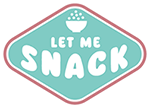Ever picked up a "healthy" snack only to find yourself playing detective with the ingredient list? If you've ever wondered why you need a chemistry degree to understand what's in your afternoon munch, you're not alone. Let's decode those mysterious labels together – no PhD required!
The Clean Label Chronicles
Remember when food labels were simple? Pepperidge Farm remembers. (Sorry, couldn't resist!) But seriously, let's talk about why modern snack labels look more like scientific papers than food descriptions.
Red Flag Ingredients to Watch For:
- Seed Oils: The sneaky inflammatory troublemakers
- Canola oil
- Sunflower oil
- Soybean oil (hiding in practically everything!)
- The Preservative Parade:
- BHA/BHT (fancy terms for "this will outlive your houseplants")
- Sodium benzoate
- Artificial colors (because apparently, we eat with our eyes first?)
- Sweetener Suspects:
- High fructose corn syrup (the usual suspect)
- Maltodextrin (sugar's incognito cousin)
- "Natural flavors" (the mystery ingredient that's not so natural)
The Clean Label Checklist
✓ Can you pronounce it?
✓ Would your great-grandmother recognize it?
✓ Is it actually food?
✓ Does it sound like something from your chemistry class?
Why Clean Labels Matter
Your body is like a luxury car – it runs best on premium fuel. Would you put mysterious additives in a Ferrari? Didn't think so! Here's what clean eating actually does for you:
- Better Energy Levels
- Improved Digestion
- Clearer Skin
- Reduced Inflammation
- Better Overall Health
The Real Cost of Processed Ingredients
Sure, that bag of cheese puffs might be cheaper than its clean-label alternative, but let's talk about the real price tag:
- Hidden inflammation
- Energy crashes
- Digestive drama
- Long-term health impacts
Making the Switch to Clean Snacking, here's your action plan:
- Read before you eat
- Start with one category (like salty snacks)
- Find clean alternatives you actually enjoy
- Don't let perfect be the enemy of good
[Continue with more tips and practical advice...]

